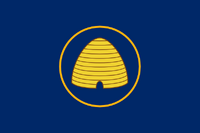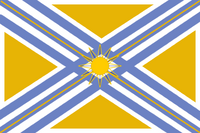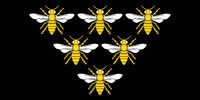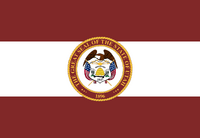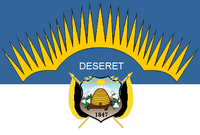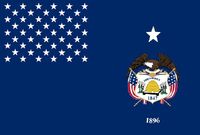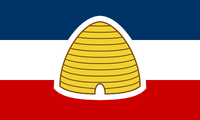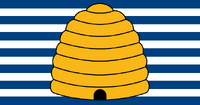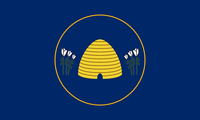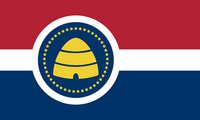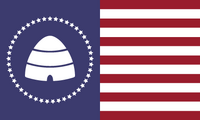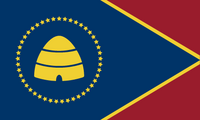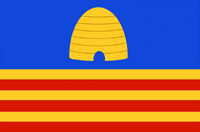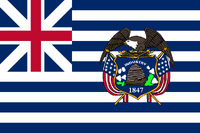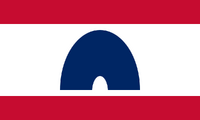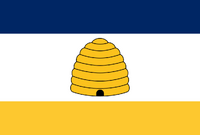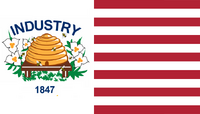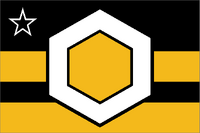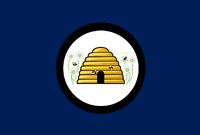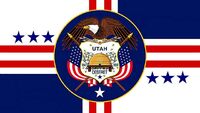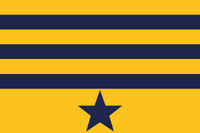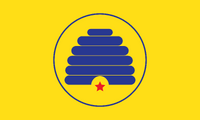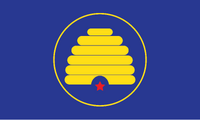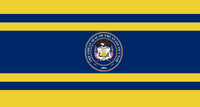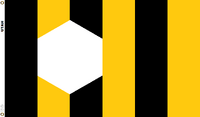(Editing a gallery) |
(Editing a gallery) |
||
| Line 70: | Line 70: | ||
Utah Redesign.png|Redesign by [[User:Moraisdethiago|Moraisdethiago]]. January 2019. ([[User:Moraisdethiago/Flag Proposals/American States#Utah|details]]) |
Utah Redesign.png|Redesign by [[User:Moraisdethiago|Moraisdethiago]]. January 2019. ([[User:Moraisdethiago/Flag Proposals/American States#Utah|details]]) |
||
UTAH RADICAL 6bg.png|Proposal for Utah - black gold reference for the honey bee - white for faith. hexagon to represent the 6 legs of the bee and the shape of a cell of honey. Design by RottenAli |
UTAH RADICAL 6bg.png|Proposal for Utah - black gold reference for the honey bee - white for faith. hexagon to represent the 6 legs of the bee and the shape of a cell of honey. Design by RottenAli |
||
| + | State Flag Utah.jpg|The white background symbolizes the white snow in our mountains and white salt in the Great Salt Lake. The red and yellow colors are a frequently used color combination utilized by Native Americans for centuries. It also was a color combination used by the Spanish, thus reminding us of our heritage before the acquisition of the territory that now comprises Utah by the United States. The honeycomb pattern represents cooperation and hard work The thirteen individual pods in the honeycomb are symbolic of the thirteen original colonies. (I really enjoy this play on words.) They remind us that their success came about through cooperation and working together for the common good. The red circle represents the circle of life. Inside the circle are the three things that Utahns love and that Utah is famous for: our mountains (symbolized by the petroglyph of mountains), our rivers and lakes (symbolized by the petroglyph of water) and the desert (symbolized by a simple cactus). The petroglyphs symbolize our connection to the past as the foundation of our future. |
||
</gallery> |
</gallery> |
||
Revision as of 18:17, 18 February 2019
| This page uses Creative Commons licensed content from Wikipedia. (view authors) |
The flag of the State of Utah was adopted in February 2011 and consists of the seal of Utah encircled in a golden circle on a background of dark navy blue. It replaced a previous flag that had been in use since 1913.
A bald eagle, the national bird of the United States, symbolizes protection in peace and war. The sego lily, the state flower of Utah, represents peace. The state motto "Industry" and the beehive represent progress and hard work. The U.S. flags show Utah's support and commitment to the United States. The state name "Utah" appears below the beehive. The date 1847 represents the year the Mormon pioneers entered the Salt Lake Valley, while 1896 represents the year that Utah was admitted as the 45th state to the Union.
In 2011, the color of the shield in the seal was changed from blue to white, and the year 1847 was moved onto the shield.
Proposals for a New Flag of Utah
Shown below are various designs that have been proposed for a new flag of Utah.
Most common symbolism
Beehive and honey bees
The beehive has been, at least since Roman times, a very meaningful symbol, being used in heraldry since Middle Ages. According to Freemasonry, the beehive is a symbol of industry, co-operation and dedication to work. Latter-Days Saints Church adopted it with a similar symbolism.
In the language of Jaredites, a people described on Book of Mormon, the word "Deseret" means "honey bee". The Mormon community suggested the creation of the State of Deseret on an area that included the current state of Utah, but the federal government rejected the proposal and created the Territory of Utah on same area.
However, the beehive and the honey bees is still a symbol strongly related with Utah: a beehive is present in the state flag, state seal and highway marks; the beehive is the state emblem; Utah's official astronomical symbol is the "Beehive Cluster", its official insect is the honey bee, the state motto is "Industry" (a reference to the beehive's symbolism); and its unofficial nickname is "The Beehive State".

